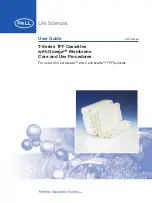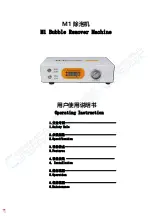
Thermo Scientific CryoStar NX70 Operator Guide
100
Tips for Successful Sectioning
For optimal sectioning, the following points should be followed:
•
Check the condition of the blade edge; move it horizontally to the left or right side to obtain a
sharp cutting edge.
•
Check adjustment of anti-roll plate and correct it, if necessary.
•
Ensure that the edge of the anti-roll plate glass is clean and free of debris.
•
Carefully remove frost from the front and the rear part of the blade, from the anti-roll plate and
the clamping plate (i.e. with ethanol).
•
Tighten all clamping screws and clamping levers on the blade holder and specimen head.
•
Select the appropriate knife carrier and specimen temperature according to the specimen type -
see Optimum Temperature Ranges for Sectioning Different Types of Fresh Specimens.
•
Allow time for the temperatures within the chamber to stabilise.
•
Select the appropriate freezing compound (Neg50).
•
Avoid excessive use of freezing compound.
Note
If the specimen was frozen with liquid nitrogen or similar freezing techniques, the specimen must be allowed
to adjust to the cutting temperature.
•
Adjustment of proper clearance angle. Select a clearance angle of 8-12°. The preset clearance
angle is 10°.
•
Select an appropriate cutting speed: The harder the material, the slower the cutting speed!
•
Take care when bringing knife and specimen together.
During defrosting, remove the specimens from the cryochamber, as the temperature
inside the chamber will increase. Do not leave or store specimens inside the cryostat
over a long period of time. Due to a power failure or other unexpected malfunctions of
the instrument, the specimen might be damaged.
















































